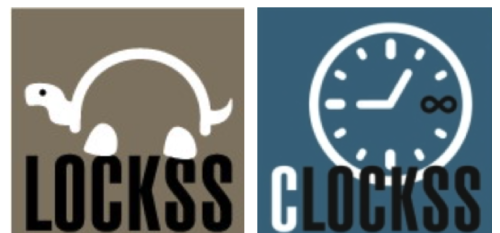2025 September Issue
We are pleased to publish the September 2025 issue of the International Journal of Contemporary Educational Research.
Paper Preparation
Language: English
The publication language of the journal is English.
Paper Types: Research Papers, reviews, case reports and letters to the editor.
However, we advise authors to be as concise as possible for dissemination of the work.
Paper Format: MS Word Template
Image Format: JPEG Minimum 300 dpi
Citation Style: Citation Style: APA 7 version (https://apastyle.apa.org/products/publication-manual-7th-edition)
Author Change: Only processed before the manuscript is accepted. Authors should carefully review the list and order of authors before submitting their manuscript and provide the final author list at the time of original submission.
Writing Guidelines:
Manuscripts must be original, unpublished, and not under consideration for publication elsewhere at the time of submission to the International Journal of Contemporary Educational Research (IJCER) and during the review process. The following spelling rules should be taken into consideration during manuscript submission.
Authors are required to prepare manuscripts in accordance with the relevant guideline listed below:
To find the right guideline for your research, please complete the questionnaire by Equator Network here.
Educational Academic Research encourages authors to follow the ‘Sex and Gender Equity in Research – SAGER – guidelines’ when preparing their manuscripts to promote the inclusion of sex and gender considerations in research. Before submission, authors can consult EASE Guidelines for Authors and Translators to produce clear, concise and accurate manuscripts that are easy to understand and free of common errors and pitfalls.
The style of manuscripts should follow the Publication Manual of the American Psychological Association (APA 7), Seventh Edition (2020).
Manuscripts can only be submitted through the journal’s online manuscript submission and evaluation system (https://ijcer.net/index.php/pub/about/submissions). Manuscripts submitted via any other medium and submissions by anyone other than one of the authors will not be evaluated.
Submission files;
• The journal template should be taken into consideration when uploading the paper to the system. Please do not write personal information in the template file. Fill in the template and upload it during submission.
• A plagiarism report must be uploaded when the paper is uploaded to the system. Plagiarism report can be obtained from software programmes such as Turnitin & Ithenticate. The plagiarism rate should not be above 20%.
• Fill out the copyright notice text and upload the document during submission. The copyright of the published paper belongs to the author. With this agreement, the authors authorise our journal to publish the paper and to identify itself as the original publisher.
• Ethics committee approval must be obtained for research in all disciplines that require ethics committee approval. In this case, the ethics committee approval document must be uploaded to the system. If your study is an paper that does not require ethics committee approval, please indicate this.
• Provide a 'Title Page' containing your personal information such as author names and affiliations and upload this file with the submission.
• IJCER is a peer-reviewed journal and has a double-blind review system. Each paper submitted for publication in IJCER is reviewed by at least two international referees who are experts in the relevant subject area. The publication language of the journal is English. Manuscripts must comply with the grammar rules. For this reason, the papers should be proofread after all evaluation processes are completed. All papers to be published in the journal must be proofread in any of the institutions recommended by the journal. An unproofread paper will not be accepted for publication.
• IJCER is selective for manuscripts during submission. It provides a rigorous review procedure and only a certain number of papers are allowed to be published. Accordingly, papers with the following content will not be accepted into the review process:
• Studies that present a descriptive review of previous literature that is not based on a new paradigm,
• Descriptive studies based solely on the views of stakeholders,
• Only basic metaphor studies,
• Descriptive quantitative studies that use only one instrument and report differences in some variables,
• Studies not directly related to educational sciences,
• Only local, not based on international literature and relevant to international readers
Studies with the above-mentioned content may be rejected during the initial evaluation of the paper. An author cannot publish in IJCER until 4 issues following the publication. This situation is especially valid for individual papers and does not apply to papers with a co-authorship structure.
Text Formatting;
• The article should be sent in Word environment in accordance with the template. Personal information should not be written in the article file.
• Papers are accepted only in English. It is recommended that your article should be between 5000-8000 words (excluding title, author names, links, abstract, keywords, main body, references, appendices).
• As Page Layout; Use A-4 page size with 2.5 cm (1 inch) margins.
• Use Times New Roman as the font style of the entire text.
• On the Title Page, centre the page and use 14-point bold for your article title and capitalise the first letter for proper names. All authors of an article should include their full names, affiliations, postal addresses, telephone and fax numbers, and e-mail addresses on the title page of the article. One author must be identified as the Corresponding Author. Please use one line for all author names and one line for all author information.
• An informative abstract (100 to 300 words) in 10-point font, presenting the outline and conclusions of the paper.
• Include keywords (3 to 6). Separate keywords with commas. Capitalise the first letter of each keyword (e.g. Science education, Survey development).
The main text should have the following characteristics;
• Please use 10-point font size.
• Please margin the text to the justified.
• Manuscripts should be single spaced.
• Footnotes and endnotes are not accepted. All relevant information should be included in main text.
• Do not indent paragraphs; leave a space of one line between consecutive paragraphs.
• Do not underline words for emphasis. Use italics instead.
• Both numbered lists and bulleted lists can be used if necessary.
• Before submitting your manuscript, please ensure that every in-text citation has a corresponding reference in the reference list. Conversely, ensure that every entry in the reference list has a corresponding in-text citation.
Headings should have the following characteristics;
• Divide the text into unnumbered sections using short and meaningful subheadings. Please limit the use of headings to three levels. Use 12-point bold for first-level headings, 10-point bold for second-level headings and 10-point italic for third-level headings, and capitalise the first letter for proper names.
• Justify all headings to the left. Leave one line space before and after each heading (Exception: leave one line between consecutive headings).
Tables and figures should have the following characteristics;
• Please place tables and figures in the appropriate areas within the document and centre them horizontally. Tables and figures should not exceed the given page margins.
• Provide captions for each table or figure. Place the title above the table and below the figure, left justified. Please refer to the table or figure in the text.
• Please do not use vertical lines in tables.
• For figures, GIF and JPEG (JPG) are the preferred formats.
Acknowledgements or notes should have the following characteristics;
• Titles such as author contribution rate, conflict of interest, ethical approval statement and acknowledgements, if any, should be given as separate headings before the references at the end of the article.
References should have the following characteristics;
• Please list all references in alphabetical order (according to the surnames of the authors) at the end of the article.
• Use the first level heading "References".
• Follow the citation procedures of the American Psychological Association (APA 7).
Citation Style
Articles should be prepared according to American Psychological Association Citation System. In the discipline, APA 7 footnote or in-text system, whichever is widely used, may be preferred.
Final Checklist
It is hoped that this list will be useful during the final check of the manuscript before it is uploaded to the journal system.
Make sure that the following items are present:
1. Author information added.
• E-mail address
• Full postal address
• Telephone number
2. All necessary files have been uploaded.
• Article text
• Copyright Notice Text
• Plagiarism report
• Ethics Committee Approval
3. The article has been "spell-checked" and "grammar-checked".
4. All references mentioned in the bibliography are cited in the text and vice versa.
Submit Article
The account of the corresponding author of the study should be used in the submissions. All correspondence regarding the application is sent to the corresponding author by e-mail sent through the journal system.
When uploading the manuscript file, make sure that this file does not contain any elements that will decipher the identity of the author due to the double-blind review process.
Files You Need to Upload Separately:
1. Full Article Text
2. Copyright Notice Text
3. Plagiarism report
4. Ethics Committee Approval
During submission, the following commitment is obtained from the author electronically:
1. I am authorised/authorised by the co-authors to submit this work to your journal.
2. The manuscript is original, has not been formally published in another peer-reviewed journal, is not under consideration by another journal, and does not violate any existing copyright or other third-party rights.
3. I/we agree that if the article is accepted for editorial publication, it will be licensed under the Creative Commons Attribution-NonCommercial 4.0 International (CC BY-NC 4.0) licence.
4. The copyright and intellectual property rights of the author(s) or, if applicable, the author(s)' employer are reserved. The author(s) undertake(s) that the publisher is not responsible for any claims or lawsuits to be filed by third parties due to copyright infringement, and that they bear full responsibility.
5. The author(s) undertake(s) that there are no criminal offences or illegal expressions in the article, and that no illegal materials and methods were used during the research.
Update: 25.11.2024


We are pleased to publish the September 2025 issue of the International Journal of Contemporary Educational Research.
We are pleased to publish the June 2025 issue of the International Journal of Contemporary Educational Research.
